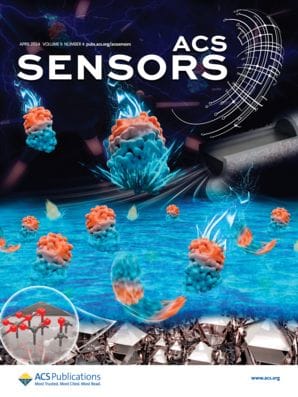oxic N-nitrosamine compounds have infiltrated a surprising number of products over the years, including beer, tires, and, recently, over-the-counter drugs. Formed as by-products during manufacturing, the probable human carcinogens can also contaminate the surrounding air. High levels of airborne N-nitrosamines have been found inside and around rubber plants, posing health concerns for factory workers and […]

oxic N-nitrosamine compounds have infiltrated a surprising number of products over the years, including beer, tires, and, recently, over-the-counter drugs. Formed as by-products during manufacturing, the probable human carcinogens can also contaminate the surrounding air. High levels of airborne N-nitrosamines have been found inside and around rubber plants, posing health concerns for factory workers and nearby residents. Yet detecting the offending compounds is a slow and laborious process. Now, researchers have developed a sensitive, carbon nanotube-based sensor for real-time measurement of airborne N-nitrosamines.
Detecting N-nitrosamines in air has traditionally been a multistep process: someone must first collect suspect air within solid sorbents or liquid solutions and then ship the materials to a testing facility. Then lab technicians extract or desorb the samples and analyze them for the presence of contaminants using techniques such as liquid or gas chromatography/mass spectrometry.
To shorten this process, scientists developed a sensor to detect N-nitrosamines straight from ambient air. “These sensors have low power requirements, they’re inexpensive, and they’re portable so you can bring them anywhere into the field,” says lead author Maggie He of the University of Arkansas, who developed the device with colleagues as a postdoc in Timothy M. Swager’s lab at the Massachusetts Institute of Technology.
The sensor comprises three critical components on a glass surface: cobalt(III) tetraphenylporphyrin molecules deposited onto single-walled carbon nanotubes that are stretched between gold electrodes. The porphyrin molecules selectively bind to N-nitrosamine compounds floating by, resulting in a change in resistance across the electrodes that researchers can measure to determine N-nitrosamine concentration in air.
Notably, the device showed an 18-fold selectivity for N-nitrosodimethylamine (NDMA) over other volatile organic compounds such as ethanol and water. “For nanotube-based sensors, the sensor signal interference caused by variable background humidity is a problem,” says the University of Pittsburgh’s Alexander Star, an expert in carbon nanotube-based sensing. “The selectivity achieved over other compounds, including humidity, is very impressive.”
The researchers detected NDMA, N-nitrosodiethylamine (NDEA) and N-nitrosodibutylamine (NDBA) at concentrations as low as 1 ppb. In 1998, Germany set workplace limits for the total concentration of airborne N-nitrosamines at 2.5 µg/m3 (1 µg/m3 NDMA equals 3 ppb); no such limits on N-nitrosamines have been established in the US.
The sensor also detected parts-per-billion levels of NDMA when hooked up to a commercially available sensing device, which has a pump that draws in air and a processor that sends readings in real-time to a computer or smartphone.
Although the device is designed for air sampling, He says it may be possible to use it to detect N-nitrosamine contaminants now affecting heart drugs such as valsartan and the antacid Zantac (ranitidine). She suggests potentially crushing up the pills then vaporizing them into a gas for analysis.
For now, the Swager lab is interested in using the sensor and another method developed in their lab for detecting contaminants in water, which would allow them to measure N-nitrosamines found at polluted sites around Maine as part of the MIT Superfund Research Program.
